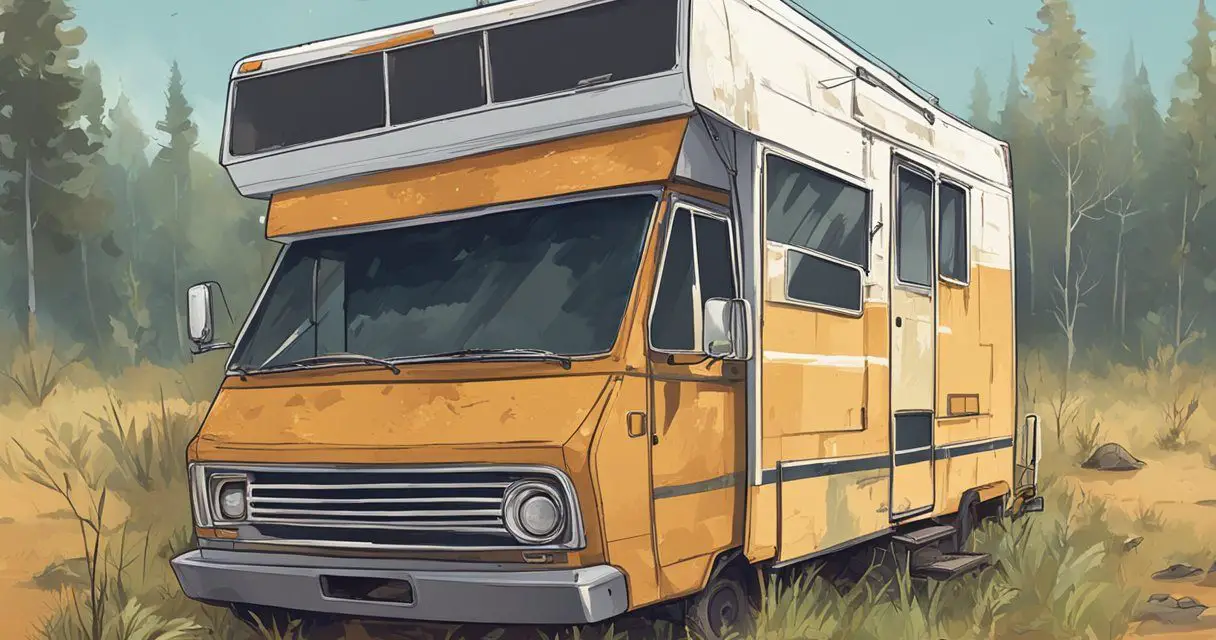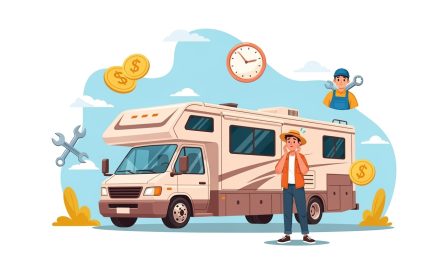Would you like to save this article?
Buying a used RV can be a thrilling yet daunting experience. With the promise of adventure and the open road, it’s easy to get swept up in the excitement and overlook potential issues. However, being aware of the red flags can save you from costly repairs and headaches down the line.
We found a great video from “Deb’s RV Services,” where a certified inspector, Steph, walks us through a particularly problematic RV inspection. Below are the highlights from the video, and make sure to watch the entire video at the bottom of the article for all the details.
1. Exterior Damage
One of the first things Steph noticed was a huge crack in the sidewall above the slide on the passenger side. “At first glance of this RV, I was looking around the exterior and I noticed that there was a huge crack in the sidewall above the slide,” she mentioned. This kind of damage is a big red flag as it can indicate structural issues and potential water intrusion. Honestly, I’ve seen smoother surfaces on the moon!
2. Separation and Delamination
As Steph walked around the RV, she noticed significant separation in the trim and delamination of the walls. “There was a lot of separation everywhere, like you could see trim pieces separated,” she explained. Delamination could be a sign of water damage, which can be costly to repair. It’s like the RV is trying to break up with itself—talk about commitment issues!
3. Slide-Out Issues
The slides are crucial for expanding your living space, but they can also be a major headache if not maintained properly. Steph found plenty of rot under the slides. “There was plenty of rot… you could hear the crunching,” she said. The owner’s response? “Yeah, but it won’t hurt anything if it’s just sitting there.” If your slides are making crunchy sounds, it’s time to slide on out of that deal!
4. Poor Maintenance
The lack of maintenance was evident everywhere, from the seals and sweeps to the gob of silicone used to patch things up. “It was clear that the owner didn’t do much with maintenance,” Steph pointed out. Maintenance is key to an RV’s longevity, and neglecting it can lead to serious problems. Using silicone to fix an RV is like using a Band-Aid on a sinking ship—good luck with that!
5. Roof Problems
When Steph got on the roof, she found more issues, including separation at the end cap and around the skylight. “There was separation at the end cap, so you knew water could have gotten in there,” she noted. Roof problems can lead to leaks and extensive water damage, making this a critical area to inspect. If your RV’s roof looks like it’s been through a tornado, it’s probably best to keep looking.
6. Owner’s Attitude
Perhaps the biggest red flag was the owner’s nonchalant attitude toward all these issues. “The owner just kind of pushed it out,” Steph recalled when the slide wouldn’t move. An owner who downplays serious problems is a major warning sign. If the owner acts like they’re selling you a slightly used toaster, run!
7. Stop the Inspection
Steph and her clients decided to stop the inspection after just one hour due to the numerous red flags. “We decided to stop the inspection and now we’re in and out,” she said. This is a good reminder that it’s okay to walk away if things don’t feel right. Sometimes, the best decision is to cut your losses and go have lunch instead!
In conclusion, buying a used RV requires a keen eye and a willingness to walk away from a bad deal. For more insights and a detailed walkthrough of this inspection, make sure to watch the entire video from Deb Sery Services at the bottom of this article. Happy RV hunting!





